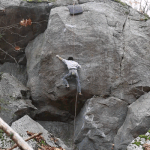
This article originally appeared in Brooding, a newsletter delivering deep thoughts on modern family life. Sign up here.
I learned about other people’s nostalgia at a very young age. On the commune where I lived as a kid, there was a pervasive feeling that the best years had already come and gone before I was born. The late ’60s and ’70s were the years when the world that we lived in was made. By the time I was conscious, in the late ’80s, that world was gradually being dismantled as people got jobs, had children, were married, and inevitably got divorced. As a child in need of minding and money for extracurriculars, I was vaguely aware that I might be part of a larger problem. I resented this knowledge but accepted it as a fact of life. Every social group has its golden age, and ours had passed. Some children grow up surrounded by a religious doctrine, and this was my equivalent.
This sense that my community’s golden age had preceded me felt like an insult when I was a kid. And as an adult, it has made me extremely suspicious of nostalgia in all its incarnations. The way I feel about nostalgia is the way some children of alcoholics feel about alcohol. And during the holidays, nostalgia, just like booze, is everywhere. We all have our own relationships to it. Understanding how it makes me feel and behave has been important as I’ve gotten older.
Nostalgia during the holidays should be treated like a controlled substance. It’s fun and dangerous. Even for those of us who hate where we come from, or for whom nostalgia means very little for most of the calendar year, the holiday season dares us to stare into the void of the past for too long. At best, holiday-season nostalgia is a state of arousal that makes your life more vivid, like a microdose of ’shrooms.
But at worst, it’s an unscratchable itch — a jones for a fix that does not exist. To cope, we put on elaborate performances, subjecting our families to reenactments of our innermost regrets and fantasies, exhausting everyone around us. We even rely on holiday-season nostalgia to try to fix things that have been broken in the past.
The way I have tried to manage nostalgia, certainly since my parents have died, has been to shut it out of my life. Shark mode: Keep it moving. Nostalgia is too risky — despite my suspicions of it, there’s always a chance of an overdose. As much as I love the coziness of the holidays, I have a hard time succumbing to its pleasures because my critical orientation gets in the way. But the more I avoid it, the scarier it seems and the more I seek to isolate myself. This is not a great strategy. Isn’t togetherness the actual point of the holidays?
The way I have tried to manage nostalgia, certainly since my parents have died, has been to shut it out of my life. Shark mode: Keep it moving. Nostalgia is too risky — despite my suspicions of it, there’s always a chance of an overdose. As much as I love the coziness of the holidays, I have a hard time succumbing to its pleasures because my critical orientation gets in the way. But the more I avoid it, the scarier it seems and the more I seek to isolate myself. This is not a great strategy. Isn’t togetherness the actual point of the holidays?
There is a part of nostalgia that’s like looking back on the seasons of your life in disbelief, and this is what I can get behind. It feels like being humbled by the power of time passing. When my mother died, one of the first thoughts I had — there’s no accounting for these things, man — was that maybe now I’d be someone who would cry when they listened to opera. New depths of emotional experience would become available to me, new forms of nostalgia that I’d never even known existed. I guess I was trying to think of grief as adding more richness to my life, and I wasn’t wrong about that exactly. I still don’t cry when I hear opera, at least not yet. But who knows — I’m only 41; lots of things could conspire to change that.
I want nostalgia to be a nice part of my life that doesn’t take up too much space, especially at the holidays. So I’ve attempted, perhaps futilely, to figure out exactly what I feel most wistful for from my past and to try to bring some of whatever that is into my life year after year.
The winter that I was about 11, I went with my mother to visit friends of ours who lived across the country on another commune — this one was (and is) also a theater company. They were staging their annual Christmas show at the time, in which the audience rode on sleighs pulled by draft horses through the woods, out of the darkness of which scenes of an unfolding play would appear. A few times, I was allowed to assist with the production: hold a lantern from behind a tree — that sort of thing. I loved it a painful amount, the way you’re nostalgic for something while it’s still happening. This show is still in production today, and sometimes I imagine what it would be like to fly out there with my family and attend it. Some nostalgia exposure therapy.
A few winters later, at the house of some family friends in a very remote part of Vermont, we rode sleds down a slalom-twisting driveway, probably half a mile through the dark, with the corners marked by candles lit in little paper bags. At the bottom of the driveway, a pickup truck waited to take us back to the top.
I’ve realized over time that the winter woods after dark are the best place for me to microdose on nostalgia in a way that doesn’t feel like staring into the void. The Christmas after my first son was born, I decided that I wanted to invent a holiday tradition of my own. My full-abstinence approach to nostalgia felt loveless after I became a mother. I’d heard about an old English tradition called “wassailing,” in which people would go into the woods and sing songs to the trees. Seemed like a nice tradition and one that maybe a child might grow up to enjoy — or at least have fun mocking.
Our first wassail was in 2010. There were no more than seven of us in attendance, including the baby, who was zipped inside my parka. There was over a foot of snow, and it was slow going to get to the spruce tree I’d located a few days earlier in the park. We hung popcorn and cranberry garlands on the tree’s bottom branches and lit a few candles, which were immediately blown out by the wind. We stood around the tree and sing-shouted the three or four carols we all could remember most of the words to. The event, such as it was, was over in about 15 minutes. But I got what I came for.
We have wassailed every year since, and the ritual has expanded to include many friends and their kids. Now that the kids are older, we go further into the park where the woods really are dark. We bring thermoses and treats, and our repertoire of songs has grown. It’s become a neighborhood thing. We go sledding in the dark afterward. My friend Andy always lights a flying lantern, and every year we all watch nervously as it flies up and over the city. One of the pleasures of being an adult is that we get to create the things we’ll be nostalgic for later. It’s one of the few ways that we can truly be self-determined. If nostalgia is a controlled substance, at least I’m making my own, right?
More From This Newsletter
- The 10 Most-Read ‘Brooding’ Columns in 2023
- What Do Kids Lose When Preschools Are Segregated?
- Why Does the Internet Tell Us to ‘Raise Good Humans’?





